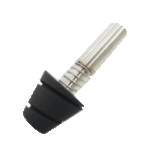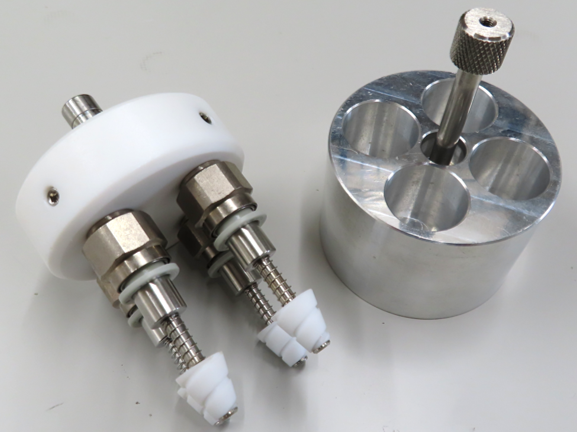Remove DMSO with no bumping,
Smart Evaporator C1

Features
- DMSO/DMF/water evaporation with no bumping
- Compatible with various containers
- Minimizes the loss by sample transfer
- Faster evaporation with inert gas
*CE/UL/CSA certified product
Watch the Smart Evaporator™ C1 in operation.
Specification
| Product Name | Smart Evaporator C1 |
| Heater shape & size | Circle shaped, φ69mm |
| Heater temperature range | Room temperature ~ 100℃ |
| Gas Purge | 〇 |
| Inner mouth diameter of compatible containers | φ4~32mm (Examples of compatible containers) |
| Color | 4 colors (Sun, Squall, Sky, Grass) |
| Size (mm) | W220 x D227 x H382 (except protruded parts) |
| Weight | 4.3kg |
| Operating environment | Temperature: 10℃~ to 40℃ Humidity: 20~80% |
*This is a CE/UL/CSA certified product. (CE Certification)
Customers Who Viewed C1 Also Checked Out:
Below are some other popular options:
Smart Evaporator K4
4-Channel Evaporator
Smart Evaporator C10
10-Channel Evaporator
Smart Evaporator ACR1
Acid-Resistant Evaporator
Optional Items
Spiral Plugs
Available in 5 sizes
(for supplement / replacement)
Spiral Plug SP-V series
designed for effective water evaporation
Available in 5 sizes
(for supplement / replacement)
Filter
Available for less contaminated
air-flow (optional)
Vacuum Pump
Is required to operate the Smart Evaporator
(sold separately)
*Are you using the old version (2012-2017) Smart Evaporator C1?
Thank you for your loyalty, and please find the optional items for your C1 from HERE.
Testimonials
*Are you using the old version (2012-2017) Smart Evaporator C1?
Thank you for your loyalty, and please find the optional items for your C1 from HERE.
Video
Watch the video to learn how to use the 4kit.











